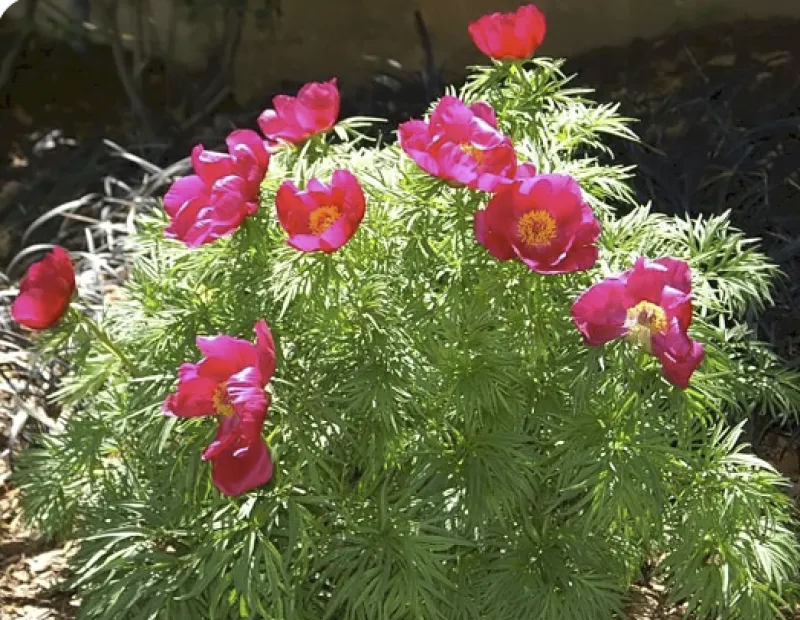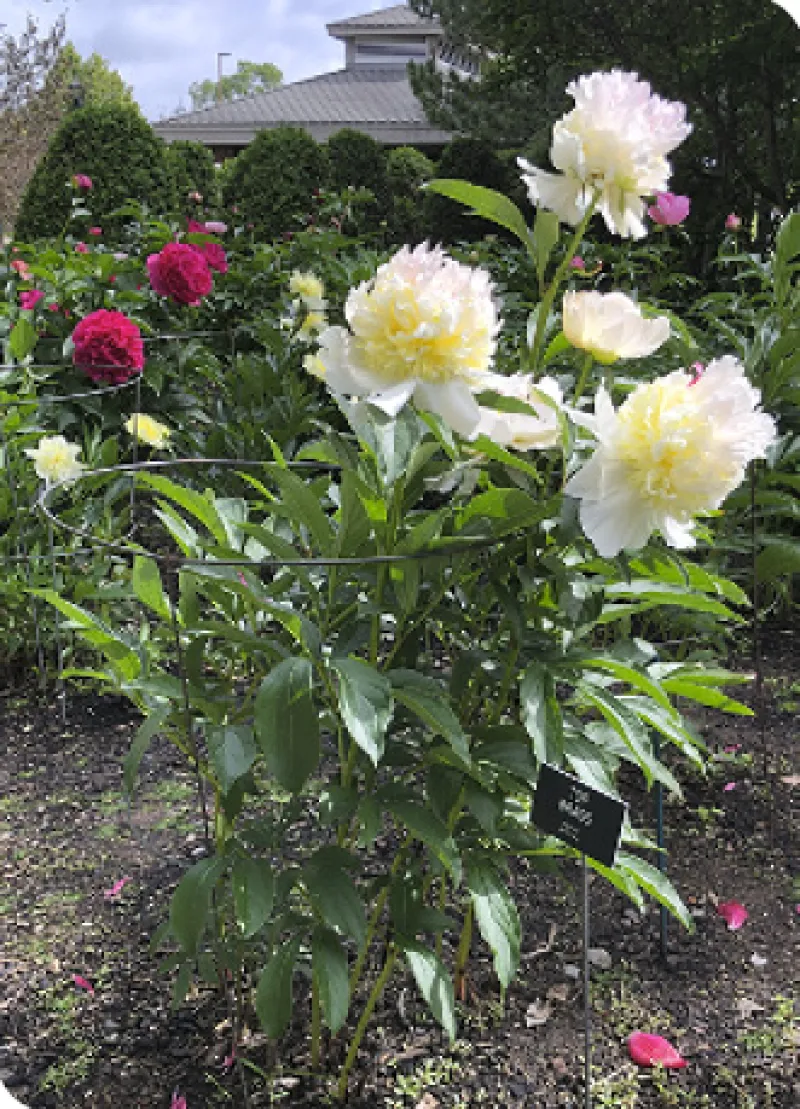Peonies fail to bloom satisfactorily for several reasons, including being planted too deeply, too little sun, diseases (such as botrytis and viruses) and insects (thrips).
If your peonies have been planted too deeply, you may accelerate flowering by resetting them to the proper depth. But if they have been in place several years, they may be nearly ready to bloom because the plant “lifts” itself a little each year as it grows.
Shade from buildings or trees may result in weak plants that fail to produce flowers or bloom sparsely. If this is the problem, select a new site in full sun. Shade that did not exist at planting time could develop during a 20-year period, gradually creating problems with reduced blooms in the last few years.
Botrytis blight is a fungal disease that overwinters on dead peony leaves, stems and roots. The easiest control is sanitation, which means completely removing the plant tops in late September or October. Bury, burn or dispose of the diseased vegetation rather than composting it.
Powdery mildew has become more common on peonies in recent years (Figure 8). This fungal disease manifests as a white, powdery coating on the leaves. As with botrytis blight, fall sanitation is important. If the disease persists for multiple years, apply a fungicide with the active ingredient chlorothalonil in spring as the new growth emerges. The fungicide can be reapplied at 14-day intervals until mid-June. Note that most fungicides are preventative. They will not cure fungal diseases and must be sprayed before the plant develops signs or symptoms in spring.
Some virus diseases may stunt and deform the growth of your peonies and cause a gradual decline. Each year, the plant becomes shorter and somewhat discolored, and may fail to bloom. Remove such plants and destroy them.
Certain insects, such as thrips, can cause flowers to become deformed and not open. Apply an insecticide containing spinosad or insecticidal soap if thrip activity is noted. Make sure to follow the instructions on the insecticide’s label and avoid spraying when the flowers are open to prevent injury to pollinators.
Note that ants do not cause damage to the peony buds. They are attracted to the sticky material on the buds. No control is necessary.







